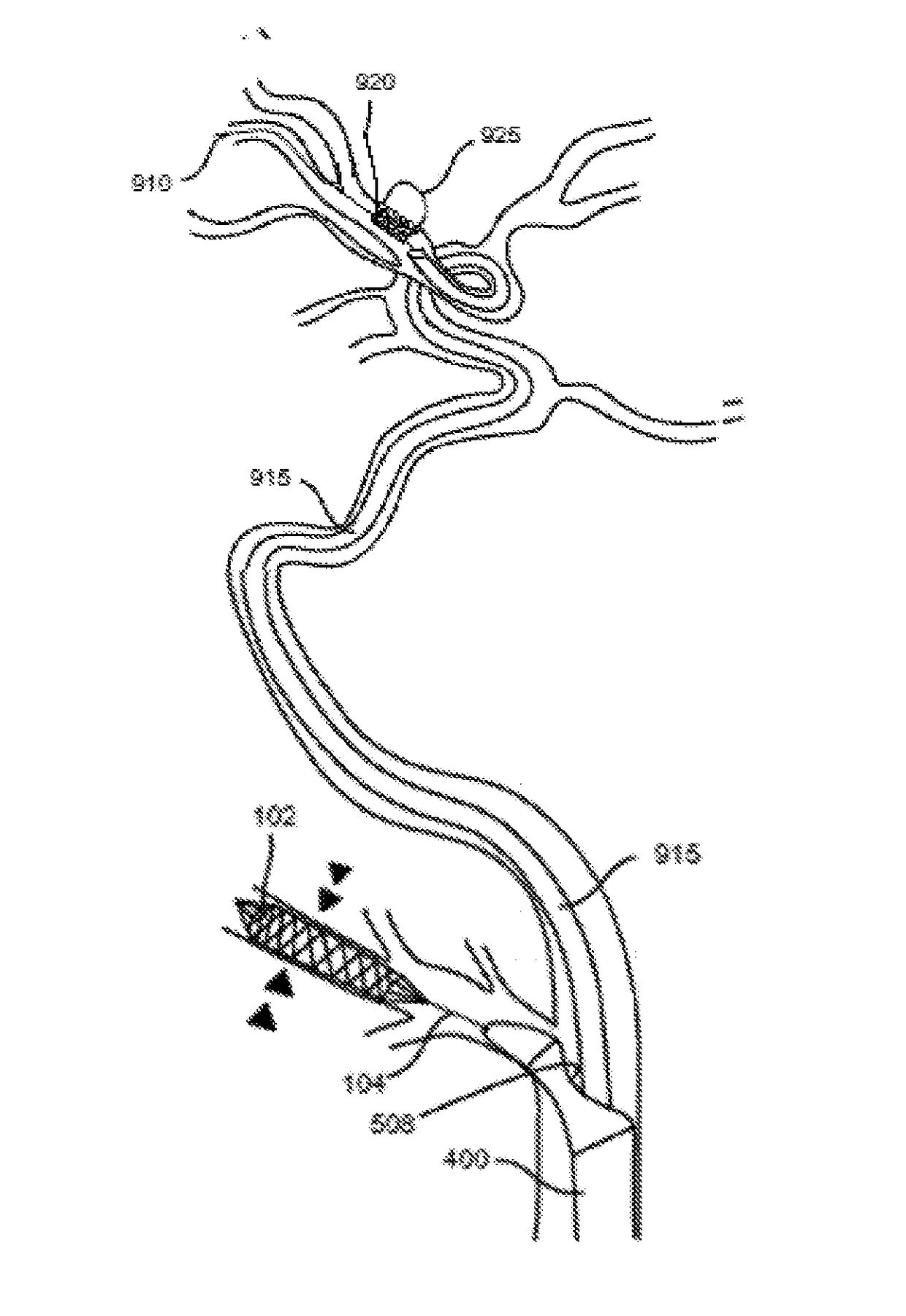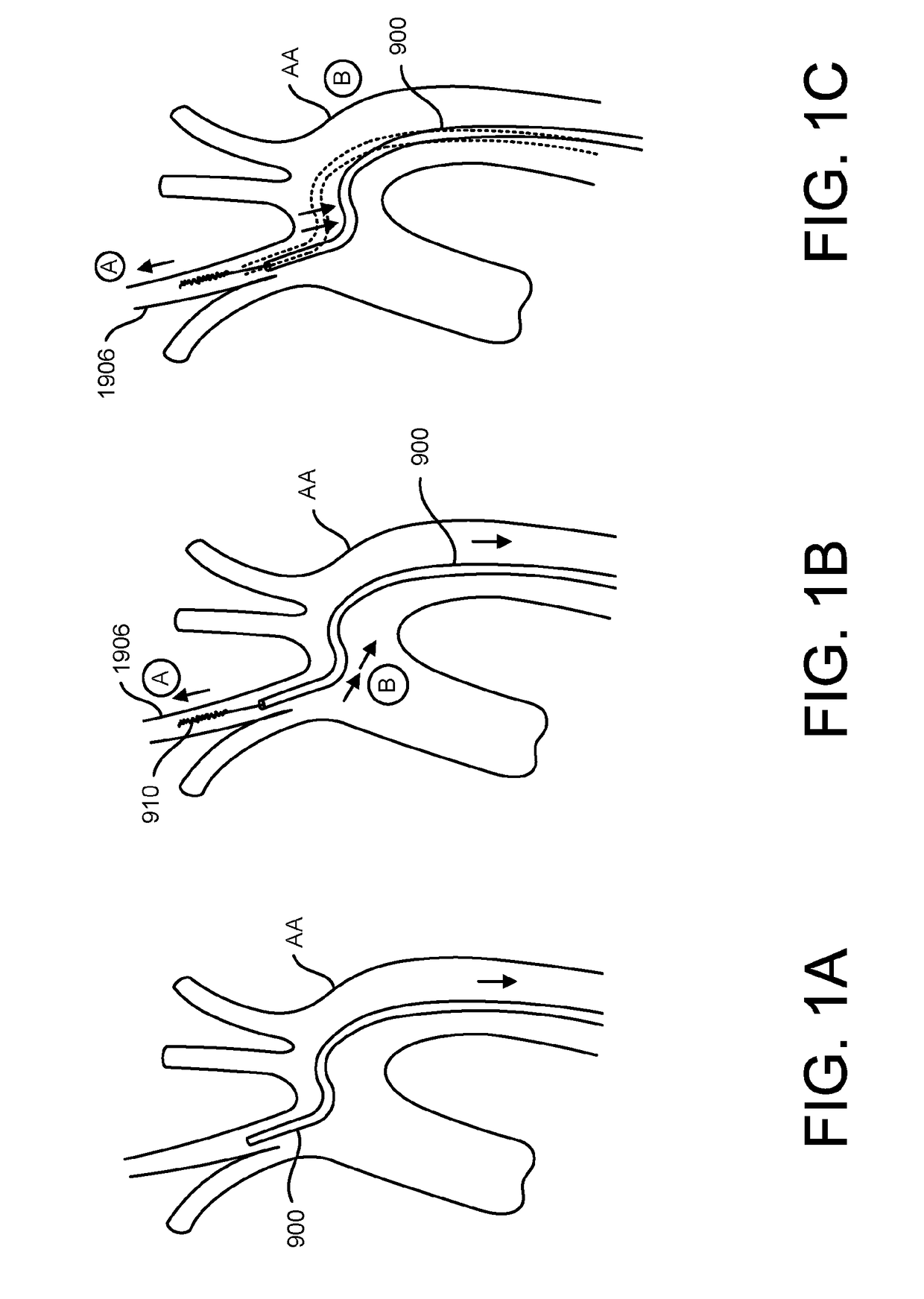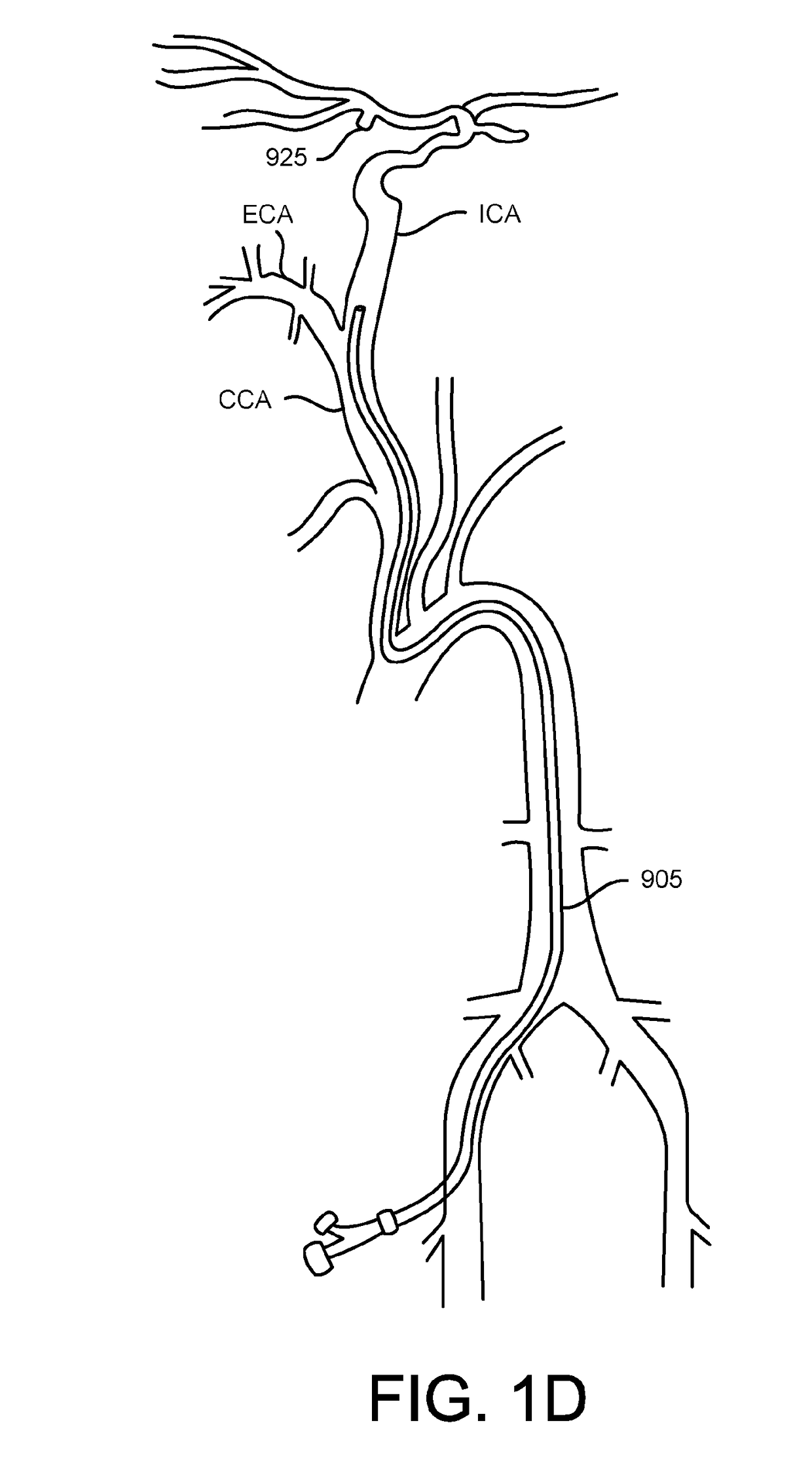Methods of intracerebral implant delivery
- Summary
- Abstract
- Description
- Claims
- Application Information
AI Technical Summary
Benefits of technology
Problems solved by technology
Method used
Image
Examples
Embodiment Construction
[0081]Endovascular access of the neurovasculature requires navigation of vessels, often tortuous and diseased, which can complicate delivery of devices such as intracerebral stents and their delivery systems. Resistance points during advancement of various implantable devices through the vessel can lead to a chain reaction of events involving the buckling and storage of tension within the catheter length. Further, many cases involve a trial and error iterative process of different constructs of supporting catheters and stiff wires to build a “tower” into the intracerebral vasculature—each iteration involving further guidance and support. This can be traumatic to the vessel through which the devices are passed and ultimately, the entire system can lose column strength and such that the devices fail to traverse to the desired location.
[0082]To access the cerebral anatomy, guide catheters and guide sheaths are used to direct interventional devices, such as stents, coils, and flow diver...
PUM
 Login to View More
Login to View More Abstract
Description
Claims
Application Information
 Login to View More
Login to View More - R&D
- Intellectual Property
- Life Sciences
- Materials
- Tech Scout
- Unparalleled Data Quality
- Higher Quality Content
- 60% Fewer Hallucinations
Browse by: Latest US Patents, China's latest patents, Technical Efficacy Thesaurus, Application Domain, Technology Topic, Popular Technical Reports.
© 2025 PatSnap. All rights reserved.Legal|Privacy policy|Modern Slavery Act Transparency Statement|Sitemap|About US| Contact US: help@patsnap.com



